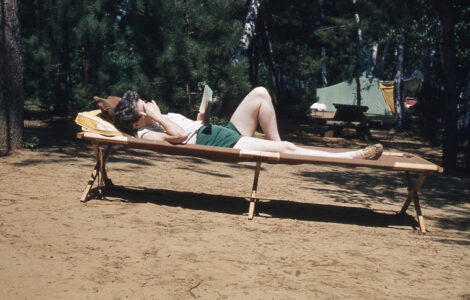Robins! In winter?

As long as there is food available, American robins may remain in cold climates. (Photo provided — Cornell Lab of Ornithology, Chuck Porter via Birdshare)
The American robin, Turdus migratorius, the migratory thrush, is found throughout North America. It is the state bird of Connecticut, Michigan and Wisconsin.
For many of us, the robins’ returning is heralded as one of the first signs of spring. Yet throughout the winter, starting as early as late December and on through the month of February and into March, I spoke with people who both excitedly and somewhat perplexedly shared stories of backyard and waterside robin sightings with me.
Some, myself included, described seeing several at once. I’ve seen perhaps as many as 12 at a time along both the Trout River, by my home and the Salmon River in Pulaski in Oswego County. They’re still showing up daily at my home, apparently looking for and eating stoneflies resting on the snow, alongside the river.
Lots of people have spotted robins in recent weeks and the question they most often ask is, “Why are they coming back so soon?” The short answer is, “They never left.”
A few migrating robins may have already returned from their wintering grounds (it’s not at all unusual for a few robins to return before the last snowstorm of the season), but it’s just as likely, if not more so, that the robins we’ve been seeing spent the winter here. It’s very likely, too, that most, if not all of them, are males.
As the mating season approaches, male robins must find and defend breeding territories. As such, they are more likely than females to brave our extreme winter weather, remaining in or near already established, successful breeding grounds. Females are more likely to migrate in search of better-quality winter food supplies so they’ll be strong enough to form, lay and incubate the healthiest eggs possible when they return to select their mates in April.
Migrations are the seasonal movements of animals between their breeding and their wintering habitats. Flight enables migratory birds to find safe breeding sites in the north, where food is plentiful in the summer, as well as the ability to seek out environments free of the hardships of northern weather, in winter. There is a fair amount of inconsistency, however, in where one bird or another may reside between breeding seasons.
Should they decide to overwinter here, robins are protected by a dense layer of loose, insulating down feathers beneath long, overlapping outer feathers. This allows them to retain an internal body temperature of 104 degrees, which they create by shivering. But, as is the case with all birds overwintering in the north, if they are going to be able to generate the energy needed to effectively maintain the body heat required to survive the cold, they need to find adequate nourishment. So they seek out areas where food is plentiful: areas where crabapples, mountain ash, sumac, chokecherries, rosehips, winterberries, etc.; can be found. In fact, growing a winter fruit garden is a wonderful way to attract overwintering robins to your yard. They may also be seen nosing around (or should I say beaking around) in leaf litter and atop the snow, searching for insects.
Interestingly, robins that overwinter in the north display an unusual behavioral change. According to the Cornell Lab of Ornithology, in winter, these extremely territorial birds form nomadic flocks, which can consist of hundreds or even thousands of birds. They spend their winter largely unnoticed roosting together in sheltered woods. When they do appear, you’ll likely see them in a crabapple or chokecherry tree, or a mountain ash or sumac bush, dining on old, shriveled, dry and frozen berries and fruit. They are often seen in areas where there is open water (i.e., a spring, stream, or river) nearby as well.
Citizen-science projects like the Great Backyard Bird Count – conducted every February as a joint project of the Cornell Lab of Ornithology and the National Audubon Society in partnership with Bird Studies Canada – provide thousands of data points that display how significantly the winter ranges of some birds have changed in recent years. Although it’s highly unlikely that we’ll ever see a flock of 1,000 robins in winter here, the 2017 GBBC includes a report of 120 American robins sighted at Robert Moses State Park in Massena on Feb. 19 of this year. Twenty were sighted there on Feb. 17, Feb. 15 and Feb. 20.
When the mating season arrives and their hormones start kicking in, overwintering flocks will split up, and the males will claim or reclaim their nesting territories of about an acre to an acre-and-a-half, which they will fight to defend. The size of a bird’s territory depends primarily on the availability of nesting sites and food.
It won’t be long now, until we start to hear the males singing to attract female mates, their familiar song, cheer up cheerio cheery, welcoming the dawn and proclaiming the closing of the day.


